Winner’s Circle
Being selected the best plant in a given category is no small accomplishment. Each group that bestows awards from All-American Selections to the American Ivy Society has its own set of criteria to measure quality. Some, such as Fleuroselect, feel that a winning plant must clearly surpass the limits of breeding and beauty in addition to being an obvious improvement over comparable plants in its category. Others evaluate varieties based on the diversity of their growing regions and certain consumer interests, such as price. For instance, members of the American Hosta Growers Association distinguish worthy hostas as those that work well in all regions of the country, are widely available to consumers and retail for around $15. Still others use varied and scientific criteria to find the best plants. The All-American Rose Selection Committee evaluates 15 critical traits, including fragrance, hardiness, disease-resistance, flowering effect and ease of maintenance, before selecting the winners.
Most groups determine which plants meet the set criteria by growing the prospective winners in multiple test gardens across the country. These trials can last for years. Though, no matter the criteria used or number of test gardens evaluated, consumers and retailers alike can be assured that they are receiving quality when they choose any of the 2005-2006 Winner’s Circle.
All-America Selections
‘Zowie Yellow Flame’ by Goldsmith Seeds is an F1 zinnia with petals that give a burst of color; its flowers have magenta-orange centers and yellow edges. Each bicolor, semi-double bloom is 3-4 inches in diameter. Mature plants reach 24-29 inches tall and spread 26-27 inches. This plant prefers warm soil and growing conditions along with maximum sunlight. ‘Zowie Yellow Flame’ works well as a potted plant or cut flower.
Floranova’s Nicotiana x sanderae ‘Perfume Deep Purple’ flowers with a unique deep-purple color and gives off a pleasant, early evening fragrance. The plant will reach 16-18 inches tall. A profusion of single, star-shaped flowers face upward and are held above the foliage. The abundant flowers reach 2 inches in diameter. ‘Perfume Deep Purple’ is excellent when used for landscaping or as a border plant.
Dianthus interspecific ‘Supra Purple’, from Hem Genetics Research B.V., has improved heat tolerance and a prolific bloom. The flowers are single, purple and lacy with highly fringed petal edges. Each flower is 11?2 inches in diameter. When placed in full sun, ‘Supra Purple’ can reach 12 inches tall with an upright bouquet habit. It is an early-flowering, half-hardy plant that performs exceptionally well in gardens. ‘Supra Purple’ blooms May through November and should be placed in a sunny location. It is easy to grow and can be cut for fresh floral arrangements.
Diascia ‘Diamonte Coral Rose’ by PanAmerican Seed is a heavily branched plant that is most attractive in containers that allow it to cascade. Delicate flowers cover the full, mounded plant throughout the spring and autumn. Winter flowering may occur in mild Southern or coastal climates. It is suited for bedding and mixed containers. Avoid excessive watering and drought. A mature plant can reach a height of 10-12 inches and spread 12-14 inches. It is suitable for growing alongside pansies.
Ernst Benary of America’s Salvia farinacea ‘Evolution’ has deep violet flower spikes that contrast attractively with its intensely green foliage. The well-branched habit yields a high number of spikes. It is an excellent garden performer that requires minimal maintenance; there are few pest problems or diseases, and it is drought tolerant. Irrigation is the only necessary upkeep to ensure that this plant flowers regularly through spring until first frost. ‘Evolution’ works well as a potted plant and is attractive when used in garden displays. Flower spikes can be used fresh or dried. Each spike has a diameter of 1?2 inch. Plant height reaches 16-24 inches, with a spread of 16-19 inches. It is half hardy and grows best in a sunny spot.
The ornamental pepper ‘Black Pearl’ from PanAmerican Seed gets its name from its black leaves and small, shiny black peppers that resemble pearls. This pepper fills the consumer need for black-leaved plants, and it has excellent heat and humidity tolerance. ‘Black Pearl’ thrives in full sunlight, which is needed for best leaf color. It has a garden height of 14-18 inches and a spread of 12-16 inches. It is an upright, bushy plant with a well-branched habit. It works well as a contrast color in mixed planters. The small peppers are edible but very spicy. American Hosta Growers Association
‘Striptease’, bred by R. and C. Thompson, is a sport of ‘Gold Standard’. The name ‘Striptease’ refers to the plant’s leaves, which give the hosta its distinctive look. A thin, white line separates the thick, dark green border of each leaf from its golden center. Lavender flowers bloom in July. ‘Striptease’ works equally well in partial sun or shade. This hosta is fast growing and Á large; it creates a mound 20 inches high and 48 inches wide.
Fleuroselect
Prunella grandiflora ‘Freelander’, which was bred by Clause Tezier, is a mixture of pink, blue and white single flowers that are each less than 1 inch in diameter. It is a first-year-flowering perennial that flowers early and abundantly from May through October. This prunella is used as a bedding plant and has excellent pot performance. It grows about 6 inches high and has a basal-branching form that spreads 6 inches. It is a hardy plant that should be placed in an area with half shade.
Florensis B.V.’s ‘Viva Fluor Rose 2006’ is a highly versatile petunia that performs well both indoors and out. This semi-trailing petunia can be used as a bedding or container plant or in hanging baskets. ‘Viva Fluor Rose 2006’ flowers early with single, lilac-pink flowers. The abundant flowers are 23?4 inches in diameter. Mature plants reach 10 inches high with a 24-inch spread. ‘Viva Fluor Rose 2006’ flowers from mid-May through mid-October and should be planted in a sunny location.
‘Ellagance Sky’ is the first Lavandula angustifolia that is light-violet blue and fully first-year flowering. Kieft Seeds of Holland bred this annual version of the Munstead strain. ‘Ellagance Sky’ is a bedding and container plant that will flower June through August. It has a finished height of 12 inches and will spread to 10 inches. The plant has good basal branching for a bushy habit. This lavandula is hardy and should be planted in well-drained soil that receives a lot of sun. Argyranthemum frutescens ‘Molimba Mini White’, bred by S&G Flowers, is a summer-flowering garden annual. The foliage is silver gray and does not yellow. The single flowers on this plant are 11?4 inches in diameter. ‘Molimba Mini White’ has an upright form, with a height of approximately 10 inches and a spread of about 18 inches. It can be used as a bedding and pot plant. The flowering period is May through September.
Florastar
Cyclamen ‘Super Series Compact Wine Red’, bred by Schoneveld Twello B.V., has lots of blooms that maintain long-lasting color. The flowers are paired with smaller, plentiful leaves. The plant produces its vibrant, tightly clustered flowers over a long period of time, which increases its shelf life. Its strong, compact shape makes ‘Super Series Compact Wine Red’ ideal for transportation. The blooms flourish even in hot weather, though a temperature around 63° F is preferred. ‘Super Series Compact Wine Red’ can be planted either indoors or out.
Perennial Plant Association
Jelitto Perennial Seeds’ Helleborus x hybridus, commonly known as Lenten rose, blooms in early spring and lasts for at least two months, with each mature plant having 50 or more blooms. Flowers come in a multitude of colors and are in either single or double forms. This variety is remarkable not only for its flowers but also its seed pods, which remain after flowering and continue to decorate the plant, as well as its attractive foliage. Divided into 7-9 segments each, the coarse, leathery leaves provide excellent year-round texture for any garden. Lenten roses grow best in well-drained, sloping areas that are partially to fully shaded. These perennials require only occasional watering after they’ve become established plants. Mature plants form clumps that are 18-24 inches tall and 24-30 inches wide.
Alll-American Daylily Selections
‘Red Volunteer’ has substantial 7-inch blooms that are bright crimson in color and have a velvety texture. The flowers emerge midseason and remain beautiful and deeply colored for 6-8 weeks. The scapes are sturdy and produce abundant buds. Blooming when the plant is 29-33 inches tall, ‘Red Volunteer’ looks striking in the middle to back border of any flowerbed. It has good rust resistance and can be planted in full sun or partial shade.
‘Miss Mary Mary’ looks similar to its parent plant, ‘Stella de Oro’, yet the two have their differences. While their blooming patterns are comparable, ‘Miss Mary Mary’ is more heat tolerant and rust resistant than its parent. The beauty of ‘Miss Mary Mary’ can be enjoyed throughout the year because of its near continuous blooming. Early in the season, ‘Miss Mary Mary’ offers small, single-petalled, golden blooms. Later, fluffy, double-petalled blooms appear on repeat bloom scapes throughout the summer until first Á frost. Grassy, dormant foliage can by seen during the winter. ‘Miss Mary Mary’ makes a great compact border plant with foliage that is 12-16 inches tall and 18-22 inches wide.
American Ivy Society
Hedera helix ‘Anita’ is a shiny, deep-green ivy with leaves that have an overall size of less than 1 inch. The mid-rib of each leaf folds slightly upward. It is a resilient ivy that survived in test gardens with temperatures of at least -10° F. In addition to working well outdoors, ‘Anita’ can grow indoors as a potted plant. The leaves grow slightly longer when the ivy is outdoors. It is well suited for some topiary work and can be grown in areas that range from full sun to dense shade. ‘Anita’ self-branches strongly and makes full mounds. It is a miniature bird foot ivy in the Pierot Classification system.
All-American Rose Selections
‘Rainbow Sorbet’ features a variety of colors like the frozen treat it is named after. The multicolored petals display bright yellow, orange and red that finish into light yellow and pink. Pointed buds open into cuplike flowers that reach 3-31?2 inches in diameter with 15-18 petals per flower. This colorful floribunda is a descendant of the popular ‘Playboy’ rose variety. ‘Rainbow Sorbet’ is an upright rose with a stem length of up to 5 feet. It has deep green, glossy leaves and is both rugged and winter hardy. ‘Rainbow Sorbet’ resists black spot. The rose was developed by Bailey Nurseries and introduced by The Conard Pyle Company. The grandiflora ‘Wild Blue Yonder’ layers deep reddish-purple and lavender hues on every petal. When grown in cooler temperatures, the already resplendent colors become even more pronounced. ‘Wild Blue Yonder’ stands out as the first lavender-blend rose to garner designation from the AARS in well over a decade. The flower size is large, with 25-30 petals per blossom and a 41?2-inch diameter. The large blooms have ruffled and wavy petals that give the rose an almost camellia-like appearance. ‘Wild Blue Yonder’ has medium-long stems that make a big, shrubby bush. Its disease resistance is excellent. This grandiflora exudes a citrus and rose scent. It was introduced by Weeks Roses and hybridized by Tom Carruth.
Personally chosen to bear her name by the well-known chef, ‘Julia Child’ is a fragrant floribunda with old-fashioned style: two elements rarely combined in a free-flowering plant. This English-style rose has a rounded habit and excellent disease resistance. Each abundantly pettalled flower is very full and up to 31?2 inches in diameter. The foliage is lustrous and bright green and grows in a bushy manner. A sweet licorice and spice scent wafts from each bloom. The flowers have a butter-gold color that is neither too vibrant nor too subtle; ‘Julia Child’ blends well into any landscape. ‘Julia Child’ was also introduced by Weeks Roses and hybridized by Tom Carruth.
‘Tahitian Sunset’ is a hybrid tea with giant blooms. The plant produces 5- to 6-inch-diameter flowers with about 30 petals each. A varied palette works to create a rose with complex coloring: high-centered, apricot buds turn increasingly pink as they unfurl and each petal is yellow at the base. The roses produce a strong anise scent. Its foliage is semiglossy. The plant has good disease resistance. Keith W. Zary hybridized ‘Tahitian Sunset’, and Jackson & Perkins introduced it.

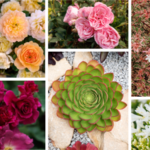




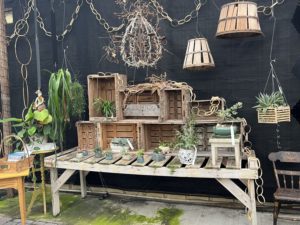
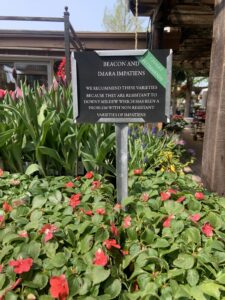
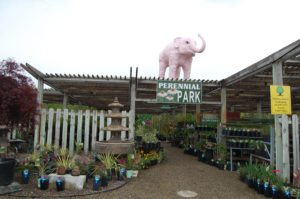
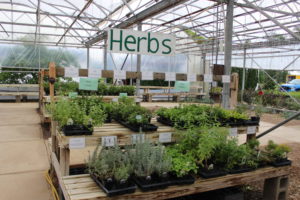
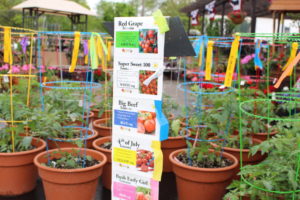
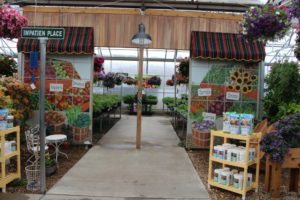
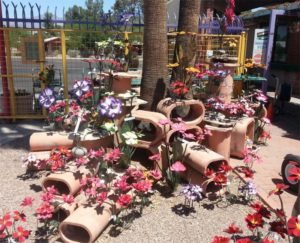
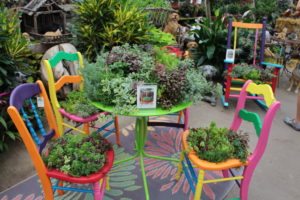
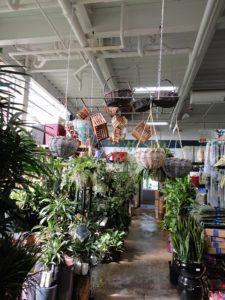
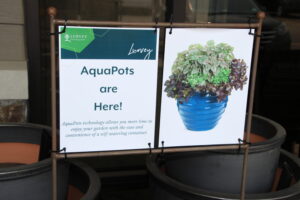
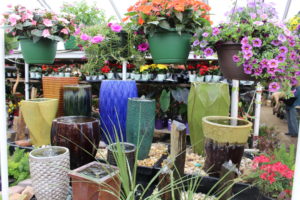

 Videos
Videos





